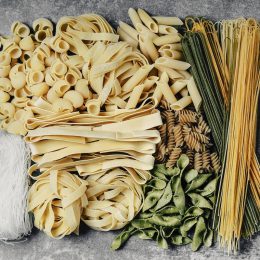6 Ingredients Dietitians Avoid
Learn how to spot the prime offenders on any packaged food label.

Reading the ingredients list on packaged foods can seriously test your vocabulary. From disodium phosphate to hydrolyzed vegetable protein and carrageenan, food manufacturers make it pretty tricky to decipher what you’re actually buying. What’s a health-conscious consumer to do?
“Buy organic and cook from scratch,” says Christine Gerbstadt, M.D., R.D., a practicing physician and a former spokesperson for the Academy of Nutrition and Dietetics.
Well, sure. But how about when that’s not possible? Know how to spot sinister ingredients hiding in plain sight, she says. Their aliases often give them away!
Dr. Gerbstadt and other nutrition experts have put these ingredients on their least-wanted lists.
1. Added Sugar
Also known as: agave nectar, brown sugar, cane crystals, cane syrup, dextrose, evaporated cane juice, fructose, fruit juice concentrate, glucose, honey, invert sugar, lactose, maltose, malt syrup, molasses, raw sugar, sucrose, syrup
As straightforward as sugar seems, all its aliases make it easy to miss. And though “cane crystals” and “evaporated cane juice” may have a more wholesome ring to them, they behave the same in your body as the white stuff.
“Sugar in all its forms adds excess calories with no added nutrients,” Dr. Gerbstadt says. Call it the ultimate mooch—it doesn’t provide anything useful and it depletes B vitamins, essential for energy metabolism. Translation: Added sugars can weigh you down—and undo the benefits of your favorite SilverSneakers class or gym workout. (Need to check your eligibility or find a location? Click here.)
Luckily, once you start cutting back on added sugar, your taste buds will adjust. Try these tips.
2. High Fructose Corn Syrup (HFCS)
Also known as: corn sugar, corn sweetener, corn syrup
This sugar alias was singled out specifically by Lisa Hark, Ph.D., R.D., author of Nutrition for Life. Like other added sugars, it can contribute to weight gain and other health problems. “This hidden source of sugar may increase LDL cholesterol and risk of diabetes,” Hark says. HFCS often lurks in sodas, baked goods, candy, yogurts, salad dressings, and cereals.
3. Trans Fats
Also known as: partially hydrogenated vegetable oil, hydrogenated vegetable oil, shortening
The process of hydrogenation chemically changes liquid vegetable oil into a semi-solid shortening, reducing the levels of healthy polyunsaturated fatty acids like omega-3s and creating unhealthy trans fats. Trans fats raise LDL (often called “bad”) cholesterol and lower HDL (often called “good”) cholesterol, increasing risk for heart attack and stroke, according to the American Heart Association. They’re also linked to the development of diabetes.
These fats often stow away in cookies, crackers, pastries, donuts, margarine, fried restaurant foods, icing, and microwave popcorn. “Read labels and reduce your intake of these foods,” Hark says. “Instead, bake your own using olive and canola oil.”
4. Sodium Nitrate and Sodium Nitrite
Also known as: celery powder, celery juice
Subscribe to our newsletter
It's quick and easy. You could be one of the 13 million people who are eligible.
Already a member? Click to discover our 15,000+ participating locations.
Follow Us
Nitrates and nitrites are used in cured meats to preserve the expected red color. But these additives have been linked to various cancers, migraine headaches, and asthma symptoms. “Pay attention to any packaged meat, specifically deli meats, bacon, jerky, hot dogs, and sausages,” says Laura Georgy, R.D., a dietitian based in Denver. “Your best bet is to purchase fresh or frozen organic meats to cut down on additives.”
5. Carrageenan
Also known as: algas, red marine algae
This thickening agent, derived from seaweed, is a plant-based alternative to gelatin. “It has been shown to cause inflammation—mainly of the digestive tract—and has been linked to ulcers and cancer in animal studies,” Georgy says. It’s used in ice cream, yogurt, jelly, chocolate milk, cottage cheese, and nondairy milks, but you can find these products without carrageenan.
6. Artificial Food Colorings
Also known as: blue 1, blue 2, citrus red 2, green 3, orange B, red 3, red 40, yellow 5, yellow 6
These synthetic chemicals dye most artificially colored foods. These dyes have been associated with hyperactivity in kids and tumors in some animal studies. Artificial food coloring most often sneaks into the diet via flavored beverages, sodas, beverage mixers, baked goods, ice cream, cereals, candy, and condiments. This is one case, though, where the nomenclature is actually helpful.
“Any time I see a number like red 40 or blue 2 in an ingredients list, I take a mental pause,” Georgy says. “This waves a red flag suggesting the product is heavily processed.”
A better way to add color to your plate: Choose a rainbow of fruits and vegetables. You’ll treat your eyes and taste buds, plus get a wider variety of nutrients.




